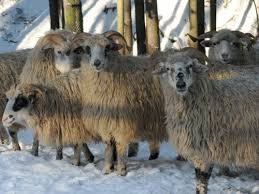Type the name of the breed you're looking for below
[wpdreams_ajaxsearchlite] Don't see the breed your're looking for? Click here and let us know!
Walachenschaf sheep
| Place of Origin | Slovakia and Czech |
| Origin | The Walachenschaf is a highly endangered landrace sheep. It is also known by: Moravian Zackelschaf, Voloshian, Valakhskaya, Voloshskaya, Valachian, Valahian, Valakhian, Volosh, Walachian, Wallachian achel, Woloschian. There are only about 200 animals left as of Oct. 1998. Romanian shepherds brought along sheep when they migrated west during the Walach colonization and they settled in the Beskides, a range in the Carpathian Mountains. The sheep remained isolated in this Moravian mountain range from the 13th to the 16th century and developed into an independent breed. This original Walachenschaf was bred only in Slovakia, Czech, and southern Poland. Large flocks were kept mainly for milk but also for meat, sheepskins and wool. Under state direction of the former Czechoslovakia, the Walachenschaf was improved by cross-breeding, which eradicated most of the original breed. Only a few remnant sheep could be located, when in the 1980’s different initiatives started working on the preservation of this impressive Walachenschaf. |
| Purpose | Meat, Milk, and Fiber |
| Characteristics | The Walachenschaf is a medium-sized, agile sheep with delicate limbs and hard hoofs. The noble head is narrow, long and decorated with more or less dark spots. Forehead is woolly and the nose straight. Rams often have Roman noses and look imposing with their spiraling horns of up to one meter, that stick out sideways. Ewes sometimes have corkscrew-like, fine horns. Short ears stand horizontally. Tail is long and woolly. Udders are well developed and very firm. Teats are large and show good milking qualities. The Walachenschaf is dual-coated with coarse, mostly white wool that reaches the ground; gray and black are rare. Bare, non-woolly parts show black and brown spots. The sheep need to be shorn twice a year for the comfort of the animals and to keep the wool manageable. First shearing is in spring before they head for their summer meadows. Second shearing is in late fall, before they head into their winter barn. In earlier times the wool was used for clothing and carpets. The Walachenschaf is extremely shy, high- spirited, alert, and loyal to its territory, nearly exhibiting the character of a wild animal. It is remarkably hardy and frugal and it can withstand extreme cold, high precipitation, as well as drought. The breed is strictly seasonal and development is slow, with first lambing at the end of the second year. Lambing is mostly between February and March. In its original area, mostly single lambs are born, but in Germany twins and triplets have been reported. According to a breeder it is best to keep the sheep on a lean diet, in order to produce only single lambs because when having twins, either the ewe or the lamb suffers. At the moment there are no data about milk productivity. Data from the Czech Republic always relate to the cross-bred Valaskaschaf. Similar races in Hungary and Romania produce about 120 liters of milk after weaning their lambs of 8 -10 weeks. Lambs grow slowly. At 100 days they weigh less than 20 kg (44 lb). Rams weigh 60 - 80 kg (132 - 176 lb) . Ewes weigh 40 - 50 kg (88 - 110 lb). Presently, the Walachenschaf breeding done in Germany is strictly for preservation and only animals that show malformations are not bred on. It would be beneficial if the Walachenschaf could be integrated into the German programs for landscape-preservation. |



